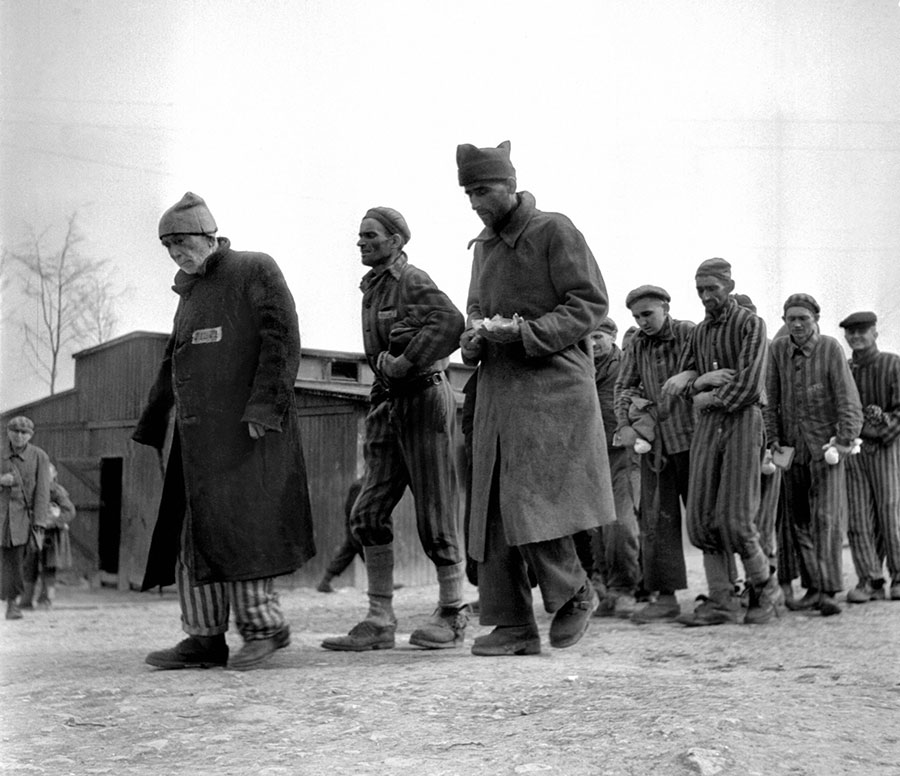Historians estimate 11 million people were murdered during the Holocaust. Of those, six million were Jewish men, women and children.

Irving Roth‘s family is among those lost. He miraculously survived two concentration camps and has dedicated his life to educating people about the evils of racism and the horrors of the Holocaust.
“My childhood was rather pleasant because I lived in a country called Czechoslovakia, established in 1918. In many ways it emulated America. The best of America. With freedom, equality, and opportunities for all,” Roth said. (Czechoslovakia dissolved into two separate nations in 1993: the Czech Republic and Slovakia.)
The 90-year-old recalls the changes that began in 1939.
“The first thing I noticed was that I couldn’t enter a particular park or go to the beach. Slowly there were more laws relating to me,” Roth said.
“I had to wear a yellow star on the left-hand side of my body to be recognized on the street as a Jew.”
Roth no longer had the rights of everyone else and it got worse.
He calls the small changes “signs along the road to Auschwitz.”.
“Starting in the spring of 1944, 437,000 Jews were taken from Hungary, primarily to Auschwitz, in 53 days,” Roth recalled.
“I am among those. In a cattle car.”
Roth recalls his entire family being shoved into a cattle car with a hundred other people. They were all caged for three days while the train took them to Auschwitz.
“They open up the doors and it’s night time. The guards are there screaming and yelling ‘get out quickly, take nothing with you, form lines.'”
“In the distance I see flames coming out of chimneys.”
“I’m 14 years old. I’m separated from my grandfather and grandmother, aunt and 10-year-old cousin. In fact, out of the 4,000 people that arrived that night in Auschwitz, 3,700 are marched in one direction, 300 in another direction. I’m with the 300, my brother is with the 300.”
“I’m shaved, my clothes are taken away and I’m tattooed.”
“Meanwhile my grandfather and grandmother, and the other 3,700 — within 24 hours are ashes.”
For nine months Roth survived Auschwitz by working, draining swamps and ploughing fields.
On Jan. 18, 1945, 60,000 people were forced on a death march for three days and three nights. The teenager was once again loaded into a train car and moved.
Hours later he ended up in Buchenwald, a concentration camp built in 1937.
“In Auschwitz, you’d get some black liquid in the morning, looking like coffee. At noon you’d get some soup and at night you’d get some bread. In Buchenwald, you were lucky if you got a boiled potato every second day,” Roth said.
“People died and people were also taken away. My brother was taken away one day. I never saw him again.”
At this point, he was down to 75 pounds and the death marches started again. Roth knew he wouldn’t survive, so he hid from the guards.
“I was hiding with some other people under a barracks, in a crawl space. A guard came along with a dog and finds us. He gets us out, marches us out to the gate. It’s 11 o’clock in the morning and the siren goes off. There’s an air raid. American airplanes are overhead.”
Roth recalls the air raid lasting for over 24 hours. The guards didn’t want to get killed and so they ran.
“By three in the afternoon, two American soldiers walked into my barracks.”
“My war was at an end. I knew it. In fact, I remember the moment … I walked around thinking ‘wait a second, nobody wants to kill me anymore.'”
“I survived. It was like a new beginning.”
Shortly after the war, Roth moved to the United States. He has devoted his life to educating people about the horrors of the Holocaust and the evils of racism.
Roth is the director of the Holocaust Resource Center at Temple Judea of Manhasset in the state of New York. He started the adopt-a-survivor program where students hear survivor stories and share them.
He also wants to remind people of the responsibility we all have to not let history repeat itself.
“We have the power to not elect people who promote hate, destruction and evil.”




Comments